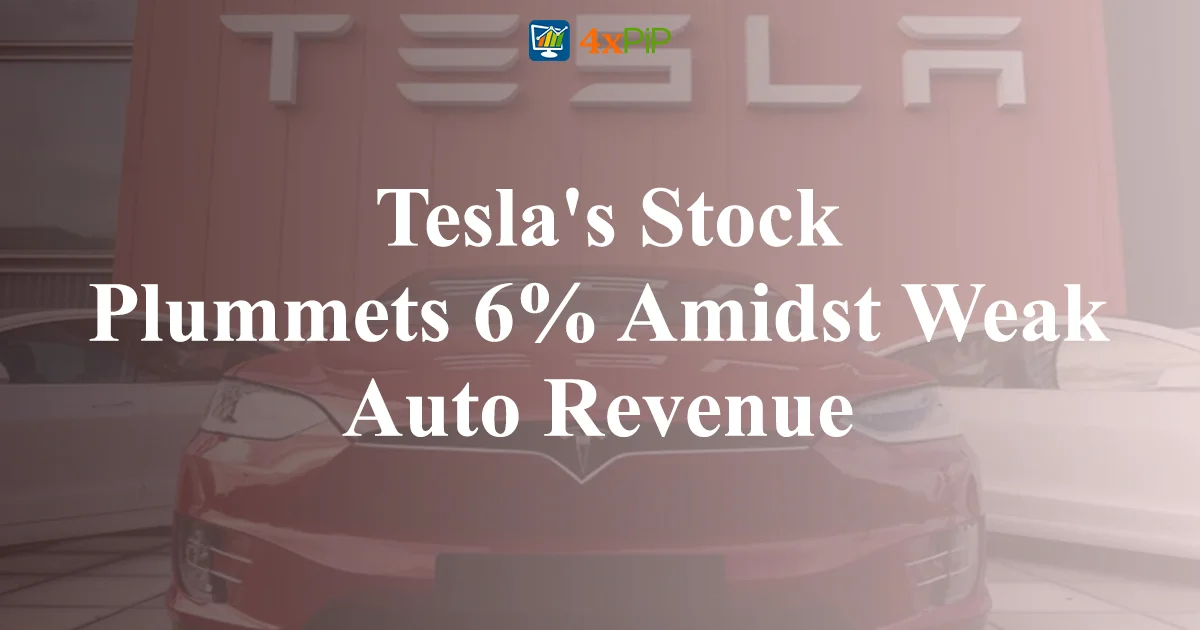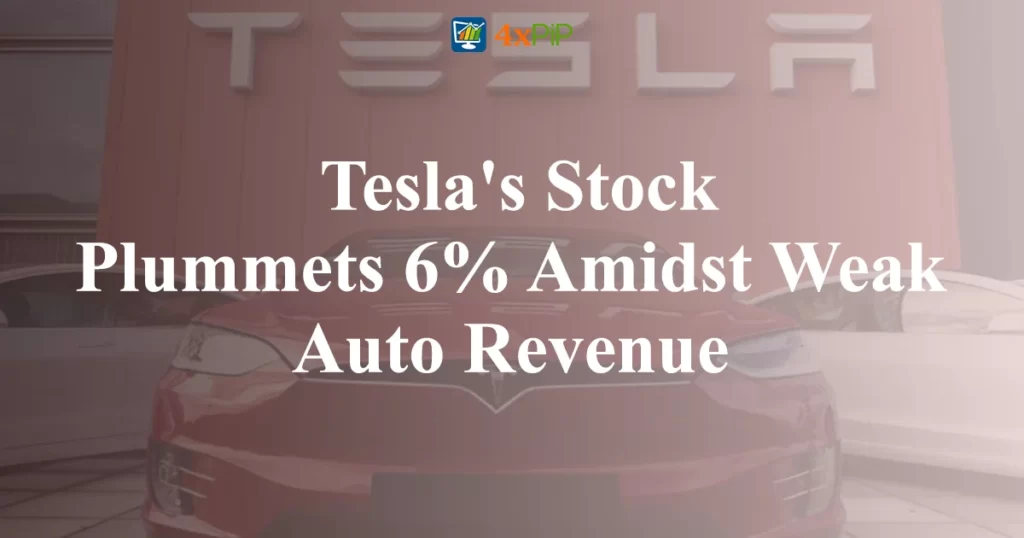Tesla, the electric car giant led by CEO Elon Musk, faced a significant setback as it reported a mere 3% revenue growth in the fourth quarter, falling short of estimates and resulting in a 6% drop in its stock value during extended trading. The auto revenue saw a minimal 1% increase from the previous year, reflecting challenges in the automotive sector. For a comprehensive understanding of market trends and potential investment opportunities, explore the resources offered by 4xPip. Visit 4xPip‘s website or contact us at [email protected] to enhance your financial strategies.
Quarterly Financial Snapshot:
Despite Tesla’s net income more than doubling to $7.9 billion, or $2.27 per share, from a year earlier, the company’s earnings per share of 71 cents (adjusted) fell short of the 74 cents expected by LSEG. Similarly, revenue came in at $25.17 billion, slightly below the expected $25.6 billion.
Auto Revenue Challenges:
The meager growth in auto revenue is attributed to a reduced average selling price resulting from substantial price cuts globally in the second half of the year. Tesla’s cautionary note on the potential decrease in vehicle volume growth in 2024 indicates challenges as it works towards launching its next-generation vehicle in Texas.
Elon Musk’s Stance on Tesla Ownership:
Elon Musk’s expressed desire to own 25% of Tesla raised questions during the earnings call. Musk, highlighting challenges from proxy advisory firms like Institutional Shareholder Services (ISS) and activists, hinted at the possibility of a dual-class share structure to maintain control and autonomy.
Optimus:
Musk introduced Tesla’s humanoid robot, Optimus, during the call, describing it as potentially surpassing the value of all other products combined. While optimistic about its potential, Musk did not provide specific guidance on the timeline for production or its capabilities.
Cybertruck Launch and Future Expectations:
The launch of Cybertrucks marked a significant event during the quarter. Musk touted the Cybertruck as Tesla’s best product ever and expressed expectations of delivering around a quarter-million Cybertrucks annually, although a precise timeframe wasn’t specified.
Financial Overview and Future Challenges:
For the full year, Tesla reported a 15% increase in automotive revenue to $82.42 billion. The energy division and “Services and Other” revenue demonstrated growth, but operating income decreased due to reduced vehicle prices and increased operating expenses related to AI and R&D projects.
Summary:
Tesla’s recent financial report reveals a mixed picture with challenges in auto revenue growth, questions about ownership, and ambitious ventures into robotics. Despite strong figures in certain areas, the stock market responded with a 6% decline, reflecting investor concerns about the company’s future trajectory. Consider exploring insights and strategies with 4xPip. For expert guidance, reach out to us at [email protected].
FAQs:
What contributed to Tesla’s meager auto revenue growth?
Reduced average selling prices globally in the second half of the year were a significant factor impacting Tesla’s auto revenue growth.
Why did Elon Musk mention the possibility of a dual-class share structure?
Musk highlighted challenges from proxy advisory firms and activists, expressing a desire to avoid being influenced by a random shareholder advisory board.
What is Optimus, and when can we expect its production?
Optimus is Tesla’s humanoid robot, described by Musk as highly sophisticated. However, specific production timelines and capabilities were not provided during the earnings call.
How did Tesla’s energy division perform in the reported period?
The energy division demonstrated growth, with revenue rising 54% to $6.04 billion, although it remains smaller than Tesla’s core automotive business.












